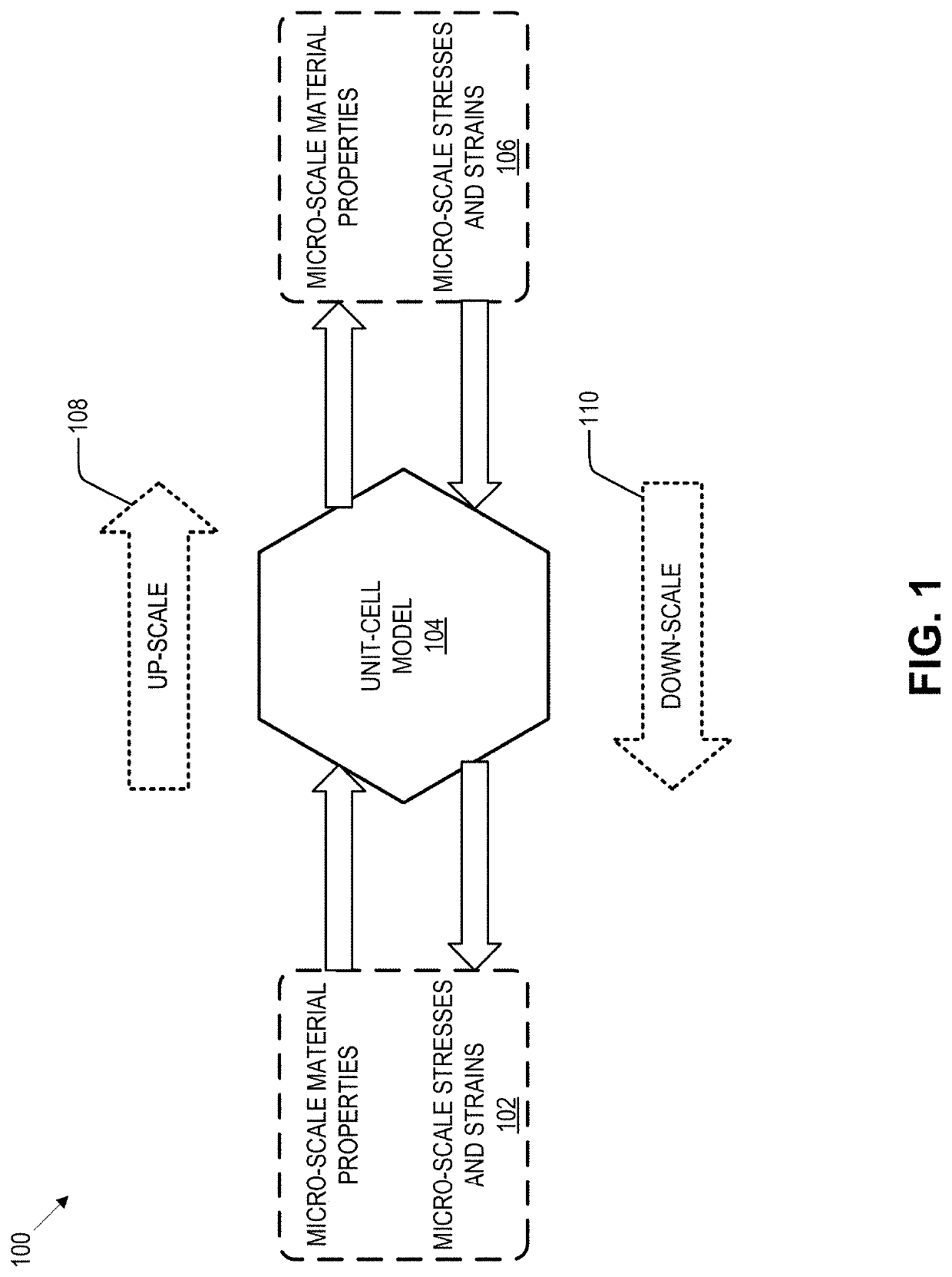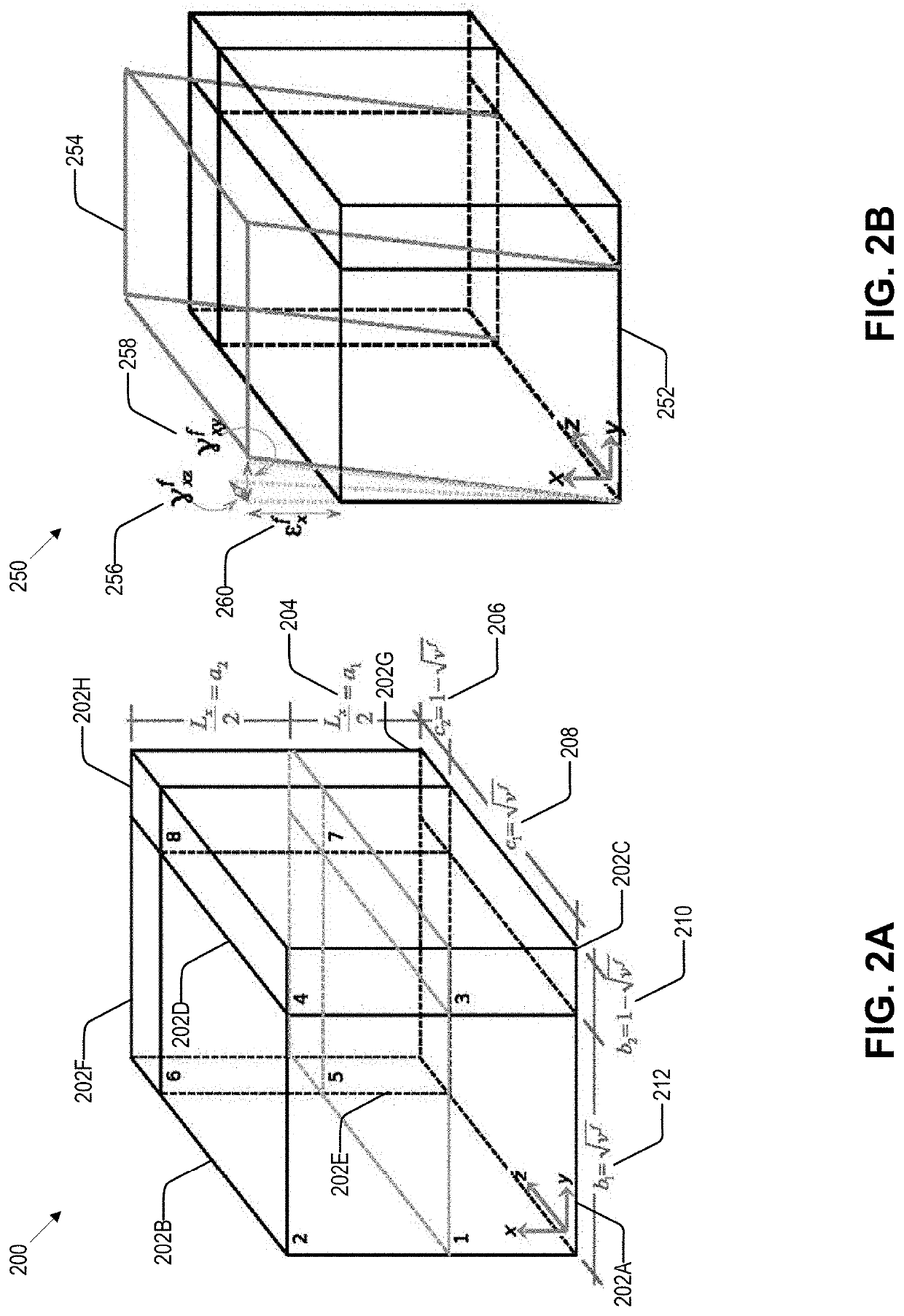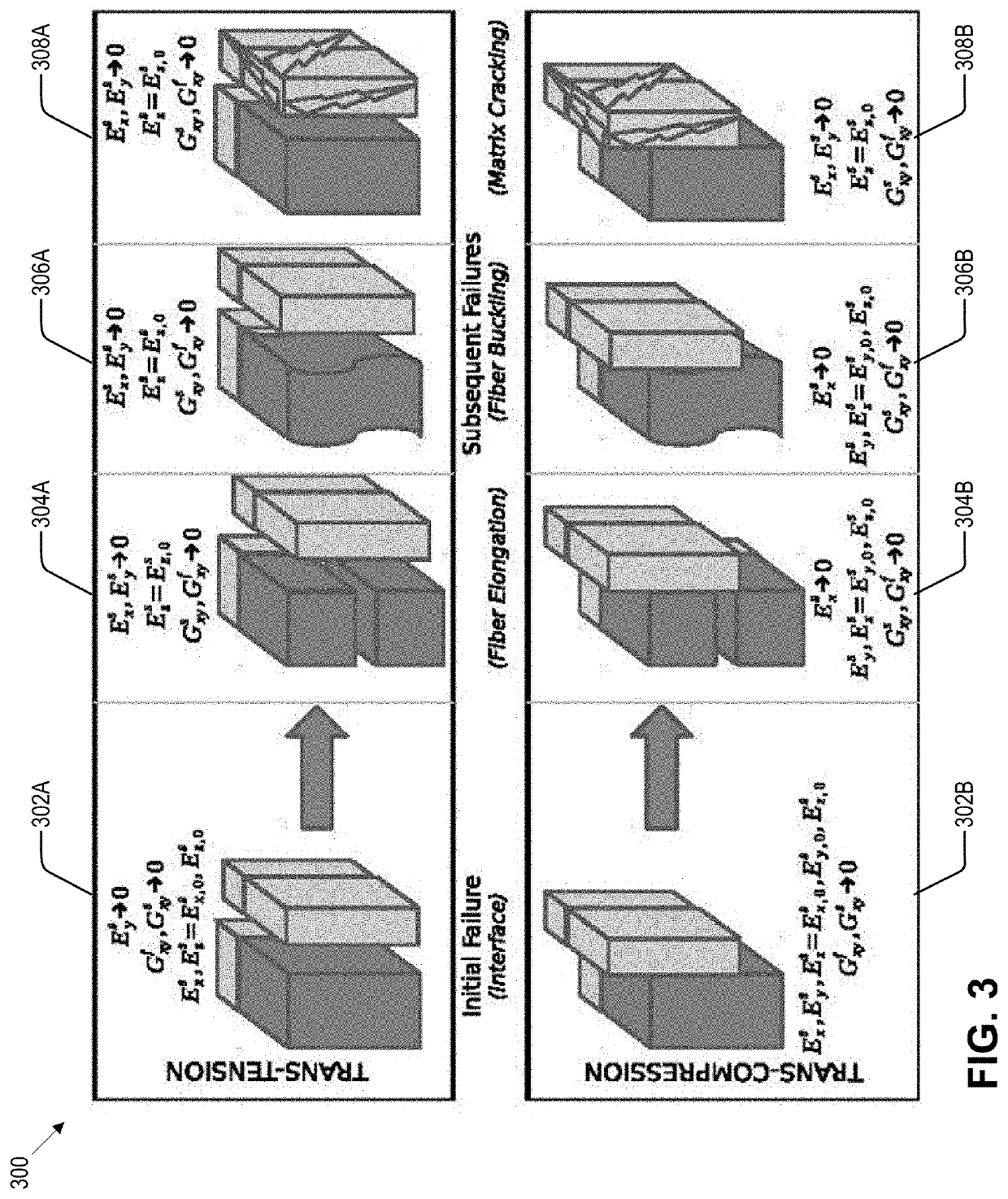Fibrous Composite Failure Criteria with Material Degradation for Finite Element Solvers
a composite failure and solver technology, applied in the field of application, can solve problems such as the detection of composite failure based on the updated model
- Summary
- Abstract
- Description
- Claims
- Application Information
AI Technical Summary
Benefits of technology
Problems solved by technology
Method used
Image
Examples
Embodiment Construction
[0020]Embodiments described herein attempt to reconcile the performance of a composite as the collection of constituent materials and their interactions for a range of composite materials. An established multiscale model for materials is used as the basis for a failure model for fiber composites. The model's computation is explained so that its results can be used to formulate the inputs to the failure model. The failure model proposed employs homogenization and disaggregation methods that are enabled by micro-scale modeling of the material's constituents. This failure model is then used to define strength reductions in the composite at the micro-level. The strength reductions enable the definition of a progressive failure methodology for application to the micro-scale, and ultimately, the macro-scale composite. The failure model, the degradation model, and the multi-scale model they are based upon are combined in a computational program for inclusion in finite element software for ...
PUM
 Login to View More
Login to View More Abstract
Description
Claims
Application Information
 Login to View More
Login to View More - R&D
- Intellectual Property
- Life Sciences
- Materials
- Tech Scout
- Unparalleled Data Quality
- Higher Quality Content
- 60% Fewer Hallucinations
Browse by: Latest US Patents, China's latest patents, Technical Efficacy Thesaurus, Application Domain, Technology Topic, Popular Technical Reports.
© 2025 PatSnap. All rights reserved.Legal|Privacy policy|Modern Slavery Act Transparency Statement|Sitemap|About US| Contact US: help@patsnap.com



